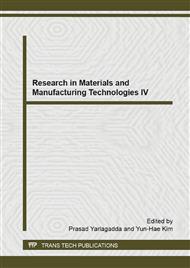p.137
p.141
p.145
p.151
p.155
p.162
p.166
p.170
p.175
Analysis of Marine Fouling Microbial Communities Adhering to Carboxyl Modified MWCNTs-Filled PDMS Coating Surface during the Initial Stage of Biofouling
Abstract:
In this study, a polydimethylsiloxane (PDMS) coating filled with low concentrations of selected carboxyl modified multi-walled carbon nanotubes (cMWCNTs) has been fabricated. The antifouling properties of cMWCNTs-filled PDMS coatings were tested and the diversity level and succession phenomenon of marine fouling microbial communities were analyzed using single strand conformation polymorphism (SSCP) method. Marine adhesion test showed that cMWCNTs-filled PDMS coating presented decent antifouling property. SSCP analysis revealed that fouling prokaryotic species on the cMWCNTs-filled PDMS coating presented high and stable diversity level while diversity and dominance level of fouling eukaryotic species were relatively low, similar to those on PDMS alone and other four antifouling coating surface without nanoparticles, suggesting that the main mechanism by which cMWCNTs-mediated surface nanostructure improves antifouling capacity may have no direct relationship with the patterns in the context of succession dynamics of prokaryotic and eukaryotic microbial communities.
Info:
Periodical:
Pages:
155-161
Citation:
Online since:
December 2014
Authors:
Keywords:
Price:
Сopyright:
© 2015 Trans Tech Publications Ltd. All Rights Reserved
Share:
Citation:


